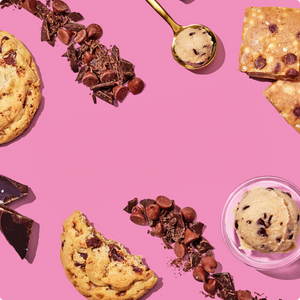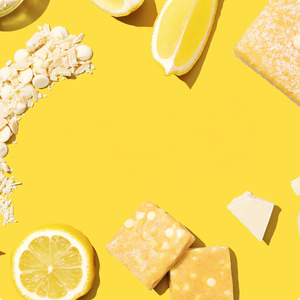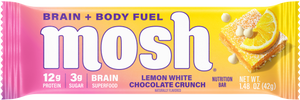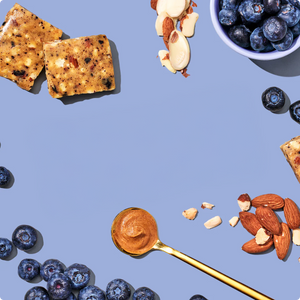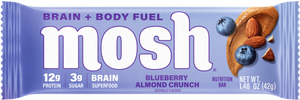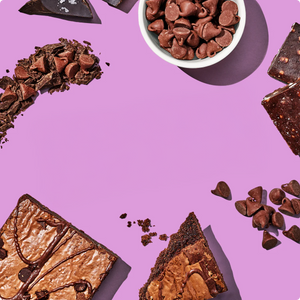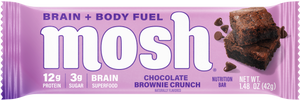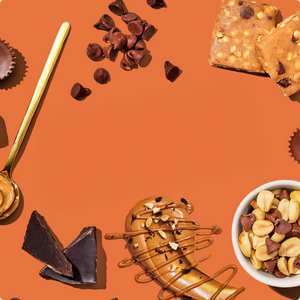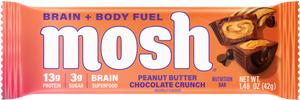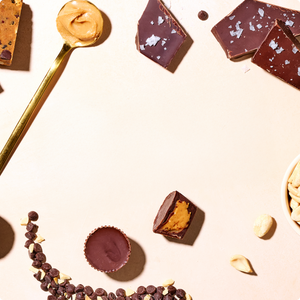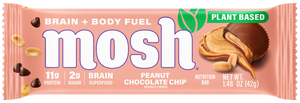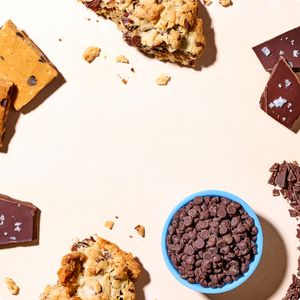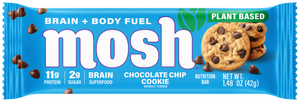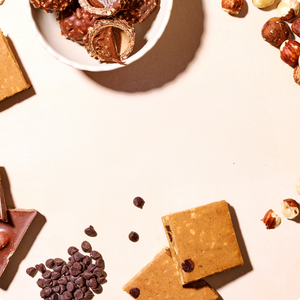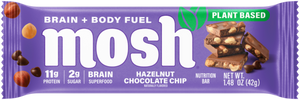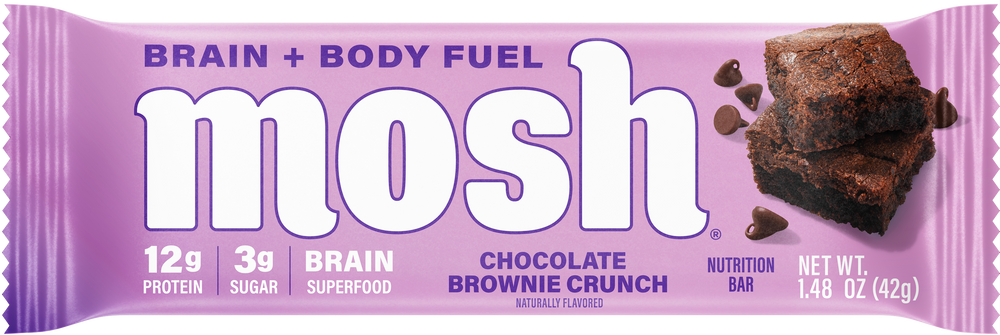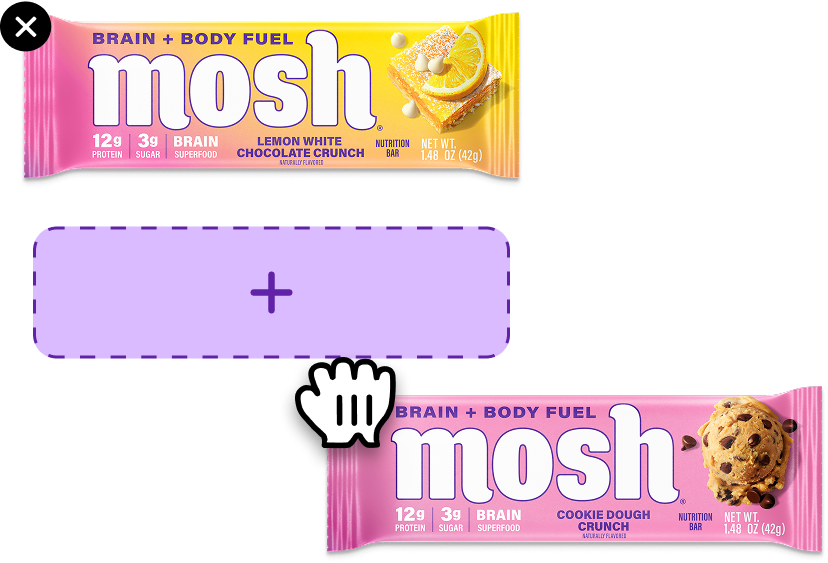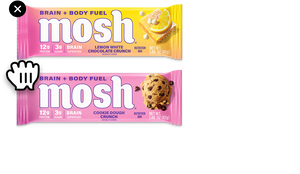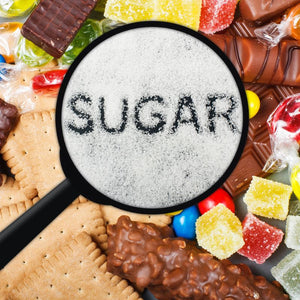As harmless as sugar may seem when it’s part of our favorite dessert recipe or the reason our morning coffee is so satisfying, sugar isn’t as innocent as we may have once thought, and science is outing the consequences of consuming too much of it in our daily diets.
Eliminating all forms of sugar from our diet is virtually impossible; plus, the truth is that you need to consume sugar every day. Glucose comes from the food and drinks we consume every day, and is the primary fuel source for all of our cells, especially in the brain.
So, how do we find the right balance between the sugar to fuel us versus the sugar that weighs us down? One easy first step is becoming more aware of how much sugar we consume each day (which is a lot more than most people tend to believe).
How Much Sugar Do You Need Each Day?
Almost all of the vitamins, minerals, and nutrients we need to live a healthy, balanced life have established daily minimums set by the U.S. Food and Drug Administration (FDA), based on age, gender, and pregnancy status. These are called recommended daily intake values, or RDIs.
While we do need sugar, society has become so accustomed to overconsuming it that organizations actually advise a maximum sugar threshold instead of a daily minimum.
The American Heart Association recommends that adult men consume less than nine teaspoons (36 grams of sugar) and adult women consume less than six teaspoons (25 grams) of added sugar daily.
These limits roughly translate to 150 and 100 calories, respectively, and are based on standard dietary guidelines (a 2,000-calorie-per-day diet).
Limiting the added sugar in your diet is a good starting point to avoiding the consequences of too much sugar, but this is far easier said than done.
One strategy to achieve this is to not only track your sugar intake through the day by reading nutrition labels, but to also be more selective about the type of sugar you’re consuming.
Using the glycemic index is essential for people with type 1 or type 2 diabetes, but it can also help you to avoid potential health consequences.
What Is the Glycemic Index and Why Does It Matter?
The glycemic index (GI) rating system will tell you how quickly a food will affect your blood sugar levels. The scale ranges from 0 to 100, with pure glucose given a rating of 100 to set the standard. The number assigned to a specific food represents the relative rise in your blood glucose levels that you’ll experience two hours after eating it.
For example, pasta has refined carbohydrates and added sugars that can quickly cause a rise in your blood sugar. The exact glycemic index of pasta can vary, but it normally hovers around 50 to 55.
On the other hand, tomatoes don’t feature added sugars and are only assigned a glycemic index value of 15, even with their natural sugar content of almost a teaspoon per tomato. While both foods will raise your blood sugar, the pasta will have a much more negative, immediate overall impact.
Do All Types of Sugar Affect Your Blood Sugar Levels the Same?
“Sugar” has kind of become a generic term for sweet-tasting carbohydrates that easily dissolve in water. You probably have a specific image of sugar in your head — namely, white granulated table sugar.
While your mental image is technically accurate (you’re thinking of sucrose, by the way), it’s not the whole picture. There are many forms that sugar can take, just as there are many different types of sugar.
The main three worth discussing are natural sugars, sugar alcohols, and sugar substitutes:
Natural Sugars
Plants produce natural sugars during photosynthesis, where a plant will use its leaves to trap energy from the sun. The energy converts water and carbon dioxide into sugar.
The specific type of sugar will depend on the plant, but the sugar will either be used as an energy source or stored as cellulose or starch. The four most common types of sugar created by plants include glucose, sucrose, fructose, and ribose.
Glucose, fructose, and ribose are monosaccharides, along with xylose and galactose. These five sugars are “simple” as they are the most basic units from which all carbohydrates are built. On the other hand, sucrose is a disaccharide as it combines glucose and fructose. Other commonly encountered disaccharides include maltose and lactose.
Each of these various types of sugar has a different GI rating and affects your blood sugar levels (and really your body as a whole) very differently.
Ribose is unique in the glycemic index, and its rating is negative. Consuming ribose does not appear to raise blood sugar levels to any degree. Instead, it’s been shown to instead increase the amount of insulin in your blood, which can then lower your blood sugar.
Maltose is another unique natural sugar, as its GI rating is literally off the charts. The GI scale only goes from 0 to 100, but maltose is at a whopping 105.
However, it makes sense when you consider that maltose consists of two glucose molecules. Consuming maltose would mean that you're consuming more glucose than pure glucose.
Xylose is a sugar that doesn’t have a GI rating because it’s only in inedible plants like rice straw, corncobs, and hardwood. It can be converted into sugar alcohol, but more on that in a moment.
The rest of the natural sugars have the following GI ratings:
- Maltose: 105
- Glucose: 100
- Sucrose: 65
- Lactose: 46
- Fructose: 23
- Galactose: 23
Sugar Alcohols
Sugar alcohols are a type of carbohydrate that has a similar effect to sugars in their natural forms. The chemical structure of sugar alcohols is very close to natural sugars. However, they can stimulate close to the same levels of sweet tastes with considerably fewer calories and much better blood sugar management.
Some sugar alcohols are found naturally, but most come from natural sugars. Mannitol and sorbitol are two examples of sugar alcohols in various fruits and vegetables. The alcohol can be extracted from these sources used in food manufacturing.
The rest of the sugar alcohols are created by altering the chemical composition. Xylitol, for example, is derived from xylose, since the purest form of this natural sugar only exists in inedible food sources. Lactitol, isomalt, and maltitol are also derived from various natural sugars and other types of food.
These are the GI ratings of the six most common types of sugar alcohols:
- Maltitol: 35
- Xylitol: 7
- Sorbitol: 4
- Lactitol: 3
- Isomalt: 2
- Mannitol: 0
Sugar Substitutes
Sugar substitutes are food additives that serve the same purpose as sugar alcohol. The key difference between the two is that sugar substitutes are synthetic. These so-called “artificial sweeteners” can provide a highly sweetened flavor with significantly fewer calories than sugar alcohols and natural sugars.
The FDA has approved five artificial sweeteners as generally safe for consumption: acesulfame, aspartame, neotame, saccharin, and sucralose. All five of these options are in a variety of processed foods, including diet and sugar-free options.
Technically, no sugar is added, so there are no additional calories or an impact on your blood glucose levels. The problem with artificial sweeteners is that it’s unclear what effect they have on humans in the long-term.
A nonexistent GI rating and no calories are excellent perks, but there can be a downside to consuming artificial sweeteners. Artificial sweeteners are typically 200 to 600 times sweeter than sugar. As a result, you can get addicted to them much easier and have intense cravings that can lead to overeating throughout the day.
The GI ratings are all five artificial sweeteners are identical and non-existent:
- Acesulfame: 0
- Aspartame: 0
- Neotame: 0
- Saccharin: 0
- Sucralose: 0
Other Notable Options
A few other options worth discussing don’t fall under any of these three categories. The first one is the sugar substitute known as Stevia. Technically, Stevia meets all of the criteria of artificial sweeteners.
It has zero calories and a GI rating that’s less than one. However, it’s derived from the Stevia rebaudiana plant native to South America. Stevia is a one-of-a-kind sweetener as it’s kind of like an organic artificial sweetener.
The other options are more than likely the sweeteners that you use in your everyday life. It’s rare for someone to use fructose extract as a sweetener in their coffee.
Here is a list of some of the most popular sweetener options and their respective GI ratings:
- Rice Syrup: 98
- High Fructose Corn Syrup: 87
- Corn Syrup: 75
- Table Sugar: 65
- Molasses: 55
- Maple Syrup: 54
- Honey: 50
- Sorghum: 50
- Maltitol: 35
- Brown Rice Syrup: 25
- Agave Syrup: 11
- Stevia: <1
Staying Healthier by Staying Away From Added Sugar
It’s not difficult to get enough sugar each day. It’s avoiding too much added sugar in your food, fruit juices, soft drinks, and processed snacks that can be challenging.
It’s a very common tactic for manufacturers to add sugars to their food. The best way around it, for now, is to make an effort to be more selective about your food and look for options that don’t feature added sugars, especially when it comes to choosing the foods that are supposed to contribute to a balanced diet, like protein bars, yogurt, granola, and smoothies.
Keep an eye out for any of the sweetener options listed above and do your best to be conscientious of your sugar consumption. Try to limit your added sugar intake to 10% of your daily calorie allotment or less. Sugar alcohols and sugar substitutes can help with calories, but be wary of overconsuming them too.
And don’t worry, MOSH protein bars are still on the “yes” list on your journey to reduce your added sugar intake. Our protein bars only include up to 1 g of natural sugar, while including 13 g of protein as well as brain-fueling ingredients like ashwagandha, vitamins D and B12, and lion’s mane to support your brain and body so you can live your best life.
If you’re looking for a nutritious snack that’s perfect to kick start your day or serve as your pick-me-up halfway through, click here to get your MOSH bar trial pack and see how sweet things can be, no sugar added.
Sources:
Everything You Need to Know About Stevia Sweeteners | Food Insight
Artificial Sweeteners: A Systematic Review of Metabolic Effects in Youth | PMC
Low-Calorie and Artificial Sweeteners | The Nutrition Source | Harvard School of Public Health
Xylitol | ScienceDirect Topics
Sugar Alcohol | Yale New Haven Hospital
What You Should Know About Sugar Alcohols | Cleveland Clinic
5 Sugars & Sweeteners Everyone Should Know | PBS Food
What is Ribose, and How Does it Work? | Bioenergy Life Science
Carbohydrate Lecture for Plant Physiology | Appalachian State University
What is Sucrose? | Food Insight
What is the Glycaemic Index (GI)? | NHS
Glycemic Index Food Guide | Diabetes.ca


